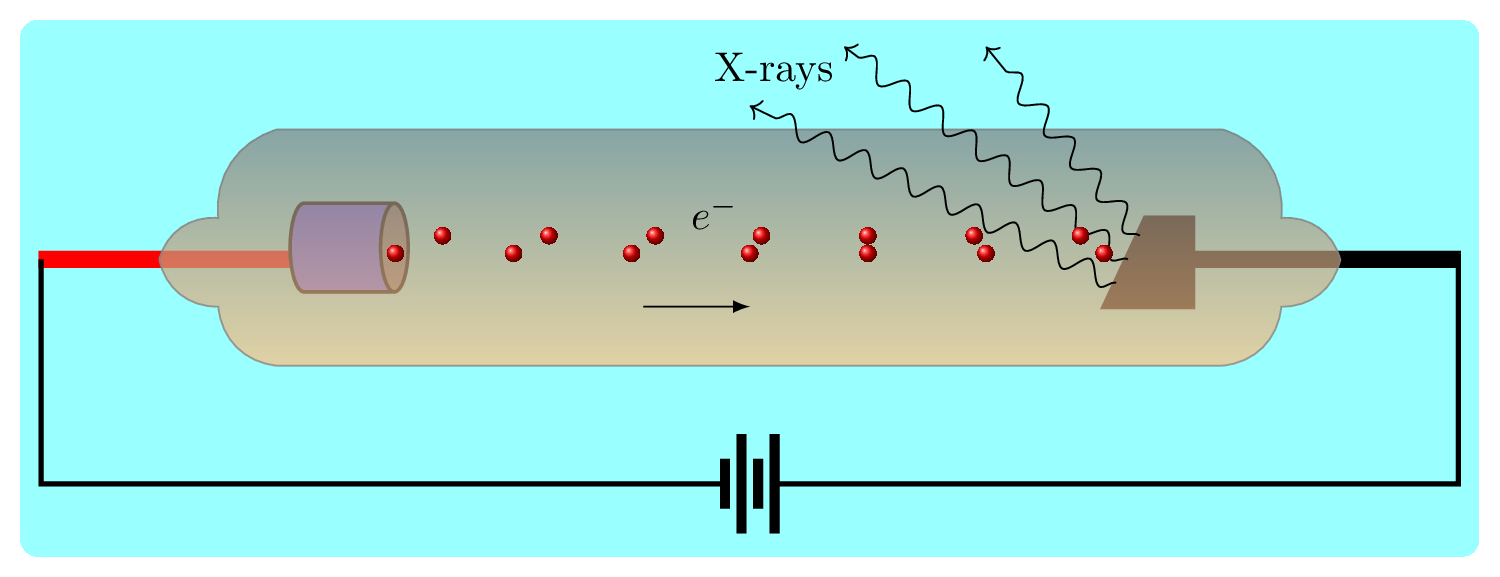Subsection 7.1.6 X-Rays
X-rays are electromagnetic radiations with high energy and short wavelength. Its wavelength range from 0.01 to 10 nm. This short wavelength allows X-rays to penetrate materials, making them useful for medical imaging and other applications.They are used to produce images of bones and other internal organs, as well as for industrial and scientific applications. X-rays are also used in radiation therapy to treat cancer and other medical conditions. However, exposure to X-rays can be harmful, so it is important to use protective measures and limit unnecessary exposure. The discovery of X-rays is credited to German physicist Wilhelm Röntgen in 1895. Röntgen was studying cathode rays in a vacuum tube when he noticed that a screen coated with a fluorescent material emitted a bright glow when exposed to the rays. X-rays are just the reverse of photoelectric effect. Roentgen discovered that holding a high voltage across two electrodes could result in the production of high energy photons, which he called "X-rays" because their nature was unknown at the time.

X-rays are produced by the sudden change in large kinetic energy when electrons smash into the target electrode in a cathode ray tube Figure 7.1.7. The energy of the x-rays produced depends on the voltage applied.
